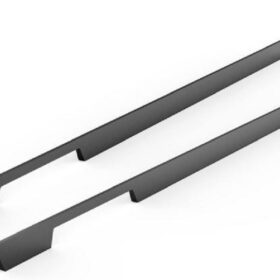DIY Guide to Aluminium Profile Kitchen Cabinet Installation
DIY Guide to Aluminum Profile Kitchen Cabinet Installation: A Comprehensive Guide
For those seeking to embark on a rewarding home improvement project, installing aluminum profile kitchen cabinets offers a sleek and durable solution. This DIY guide provides a comprehensive roadmap to guide you through each step of the process, empowering you to achieve professional-looking results in your kitchen.
Planning and Preparation
Before starting the installation, meticulous planning is crucial. Measure the kitchen space accurately, accounting for appliances, windows, and doors. Choose cabinet sizes and configurations that optimize storage and flow. Order the necessary aluminum profiles, cabinet panels, and hardware.
Assembling the Cabinets
With the components ready, assemble the cabinet frames using screws and metal connectors. Ensure square alignment using a level and square. Next, insert the cabinet panels into the frames, securing them with the provided fasteners. Add shelves and drawers as per the design.
Mounting the Cabinets
Carefully mark the wall and cabinet locations. Use a level to ensure proper alignment and eliminate any slant. Mount the cabinets to the wall using mounting plates and screws, ensuring they are securely fixed.
Installing the Doors and Drawers
Attach the cabinet doors by aligning them with the hinge mortises. Drive screws through the hinges to secure the doors. For drawers, install the drawer slides and insert the drawers into their designated spaces. Adjust the slides for smooth operation and alignment.
Finishing Touches
Complete the installation by adding handles or knobs to the doors and drawers. Consider adding decorative elements such as moldings or lighting to enhance the aesthetic appeal. Finally, clean the cabinets thoroughly, removing any dust or debris.
Additional Considerations
– Materials: Opt for high-quality aluminum profiles and cabinet panels to ensure durability and longevity.
– Tools: Gather the necessary tools, including a drill, screwdriver, level, square, and measuring tape.
– Safety: Wear safety glasses and gloves throughout the installation process.
– Time: Allocate ample time for the project, allowing for potential challenges or unexpected delays.
– DIY vs. Professional: If you lack confidence or experience, consider consulting a professional for assistance.
-
2024-11-29Top Trends in Modern Kitchen Cabinet Pulls for 2024
-
2024-11-28The Ultimate Guide to Modern Kitchen Cabinet Pulls- Materials, Styles, and Tips
-
2024-11-27Elevate Your Kitchen Design with These Must-Have Modern Cabinet Pulls
-
2024-11-26Sleek and Stylish- The Best Modern Kitchen Cabinet Pulls for a Contemporary Look










